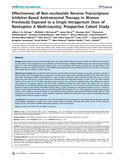| dc.contributor.author | Stringer, Jeffrey S. A. | |
| dc.contributor.author | McConnell, Michelle S. | |
| dc.contributor.author | Kiarie, James | |
| dc.contributor.author | Bolu, Omotayo | |
| dc.contributor.author | Anekthananon, Thanomsak | |
| dc.contributor.author | Jariyasethpong, Tavatchai | |
| dc.contributor.author | Potter, Dara | |
| dc.contributor.author | Mutsotso, Winnie | |
| dc.contributor.author | Borkowf, Craig B | |
| dc.contributor.author | Ngacha, Dorothy Mbori | |
| dc.contributor.author | Muiruri, Peter | |
| dc.contributor.author | Ong’ech, John Odero | |
| dc.contributor.author | Zulu, Isaac | |
| dc.contributor.author | Njobvu, Lungowe | |
| dc.contributor.author | Jetsawang, Bongkoch | |
| dc.contributor.author | Pathak, Sonal | |
| dc.contributor.author | Bulterys, Marc | |
| dc.contributor.author | Shaffer, Nathan | |
| dc.contributor.author | Weidle, Paul J. | |
| dc.date.accessioned | 2013-02-21T06:05:48Z | |
| dc.date.available | 2013-02-21T06:05:48Z | |
| dc.date.issued | 2010-02 | |
| dc.identifier.citation | February 2010 | Volume 7 | Issue 2 | en |
| dc.identifier.uri | http://erepository.uonbi.ac.ke:8080/xmlui/handle/123456789/10531 | |
| dc.identifier.uri | http://www.ncbi.nlm.nih.gov/pubmed/20169113 | |
| dc.description.abstract | Background:
Intrapartum and neonatal single-dose nevirapine (NVP) reduces the risk of mother-to-child HIV transmission but also induces viral resistance to non-nucleoside reverse transcriptase inhibitor (NNRTI) drugs. This drug resistance largely fades over time. We hypothesized that women with a prior single-dose NVP exposure would have no more than a 10% higher cumulative prevalence of failure of their NNRTI-containing antiretroviral therapy (ART) over the first 48 wk of therapy than would women without a prior exposure. Methods and Findings:
We enrolled 355 NVP-exposed and 523 NVP-unexposed women at two sites in Zambia, one site in
Kenya, and two sites in Thailand into a prospective, non-inferiority cohort study and followed them for 48 wk on ART. Those who died, discontinued NNRTI-containing ART, or had a plasma viral load $400 copies/ml at either the 24 wk or 48 wk study visits and confirmed on repeat testing were characterized as having failed therapy. Overall, 114 of 355 NVP-exposed women (32.1%) and 132 of 523 NVP-unexposed women (25.2%) met criteria for treatment failure. The difference in failure
rates between the exposure groups was 6.9% (95% confidence interval [CI] 0.8%–13.0%). The failure rates of women stratified by our predefined exposure interval categories were as follows: 47 of 116 women in whom less than 6 mo elapsed between exposure and starting ART failed therapy (40%; p,0.001 compared to unexposed women); 25 of 67 women in whom 7–12 mo elapsed between exposure and starting ART failed therapy (37%; p=0.04 compared to unexposed women);
and 42 of 172 women in whom more than 12 mo elapsed between exposure and starting ART failed therapy (24%; p=0.82 compared to unexposed women). Locally weighted regression analysis also indicated a clear inverse relationship between virologic failure and the exposure interval.
Conclusions:
Prior exposure to single-dose NVP was associated with an increased risk of treatment failure; however, this risk seems largely confined to women with a more recent exposure. Women requiring ART within 12 mo of NVP exposure should not be prescribed an NNRTI-containing regimen as first-line therapy.
Please see later in the article for the Editors’ Summary | en |
| dc.language.iso | en | en |
| dc.subject | Non-nucleoside Reverse | en |
| dc.subject | Transcriptase Inhibitor | en |
| dc.title | Effectiveness of Non-nucleoside Reverse-Transcriptase Inhibitor-Based Antiretro viral Therapy in Women Preexposed to a Single Intrapartum Dose of Nevirapine: A Multi-country, Prospective Cohort Study | en |
| dc.type | Article | en |


